The BKC Blog
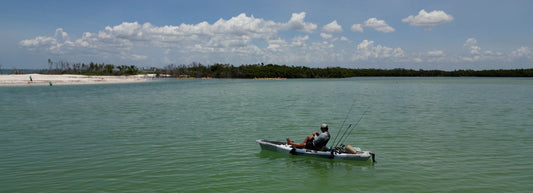
Ocean Kayak Fishing: What to Know
Kayaking in the ocean offers some unique challenges. If you also want to fish, it can be even more complex. However, the joys of waves, big fish, and stunning views can await the intrepid ocean kayaking angler. What are some key essentials of ocean kayak fishing? Safety Practice safety first in all kayaking endeavors. Be especially mindful of the risks involved in the ocean. Always wear a personal flotation device (PFD). Consider conditions. The weather...
Ocean Kayak Fishing: What to Know
Kayaking in the ocean offers some unique challenges. If you also want to fish, it can be even more complex. However, the joys of waves, big fish, and stunning views...
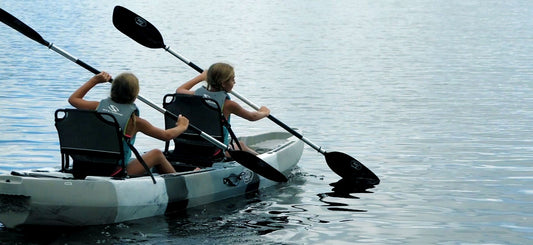
Do Tandem Kayaks Flip Easily?
Can a Tandem Kayak Flip Easily? Answer: Generally, no. Tandem kayaks (2-person kayaks) are designed to be highly stable and less likely to capsize than other types of kayaks. They are a popular choice for beginners and younger paddlers who need a partner, precisely because they are a stable option. What Makes a Tandem Kayak Stable? Answer: While it doesn’t mean they can never be flipped, tandem kayaks are designed to be stable and difficult...
Do Tandem Kayaks Flip Easily?
Can a Tandem Kayak Flip Easily? Answer: Generally, no. Tandem kayaks (2-person kayaks) are designed to be highly stable and less likely to capsize than other types of kayaks. They...
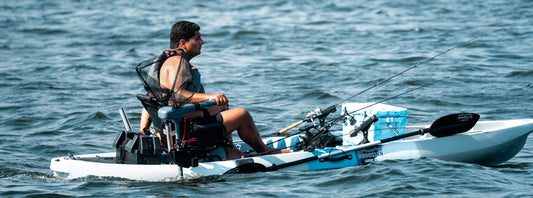
Can One Person Manage a Tandem Kayak?
Question: Can One Person Manage a Tandem Kayak? Answer: Yes. Although tandem kayaks are designed to be operated by two paddlers, they can usually be used by just one paddler as well. A tandem kayak can be paddled by a solo paddler. However, there are some considerations to paddling a tandem with just one kayaker. Question: What adjustments should be made for solo paddling a tandem kayak? Answer: The paddler will need to be aware...
Can One Person Manage a Tandem Kayak?
Question: Can One Person Manage a Tandem Kayak? Answer: Yes. Although tandem kayaks are designed to be operated by two paddlers, they can usually be used by just one paddler...
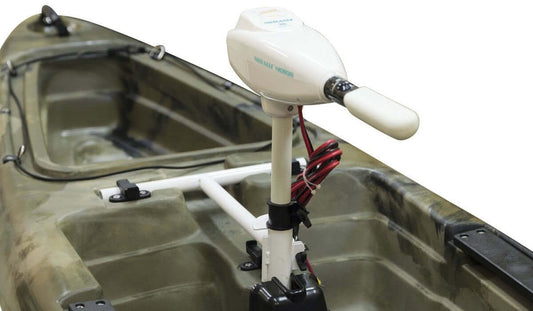
Can You Put a Motor on Any Kayak?
Question: Can You Put a Motor on Any Kayak? Answer: Although they won’t work on every single type and kind of kayak, electronic trolling motors are a common add-on to many kayaks. Most sit-on-top kayaks can be equipped with an electronic trolling motor or something similar. They allow kayakers to cover more ground, steer efficiently, and even provide some hands-free propulsion for fishing, photography, and other recreational activities. Question: What are some key points to consider...
Can You Put a Motor on Any Kayak?
Question: Can You Put a Motor on Any Kayak? Answer: Although they won’t work on every single type and kind of kayak, electronic trolling motors are a common add-on to...
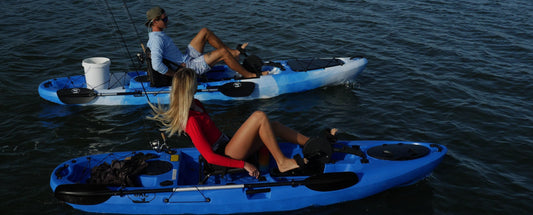
Can You Turn Any Kayak Into a Pedal Kayak?
Looking for hands-free propulsion? Like the idea of capitalizing on leg-powered motion? Then you’ve probably been looking at opportunities afforded by pedal-powered kayaks. You might be wondering if you can adapt your paddle kayak into a pedal kayak. Here’s the lowdown. Question: Can I turn any kayak into a pedal kayak? Answer: Not without extensive modification. Not every kayak can be converted - Unfortunately, turning a traditional paddle kayak into a pedal-powered one isn’t always...
Can You Turn Any Kayak Into a Pedal Kayak?
Looking for hands-free propulsion? Like the idea of capitalizing on leg-powered motion? Then you’ve probably been looking at opportunities afforded by pedal-powered kayaks. You might be wondering if you can...
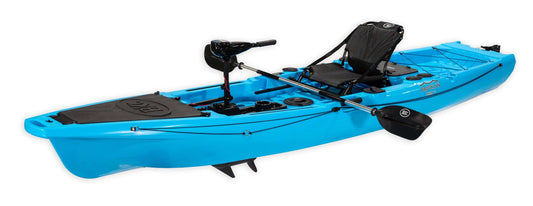
Is it Legal to put a Trolling Motor on a Kayak?
Question: Is it Legal to put a Trolling Motor on a Kayak? Answer: Yes It is legal to put a trolling motor on a kayak in most places. But you can’t just attach a motor and go on your merry way. Making this addition to your kayak opens you up to more legal requirements and considerations. Question: What are the Key Legal Requirements for a Trolling Motor on a Kayak? Answer: There are a few...
Is it Legal to put a Trolling Motor on a Kayak?
Question: Is it Legal to put a Trolling Motor on a Kayak? Answer: Yes It is legal to put a trolling motor on a kayak in most places. But you...
